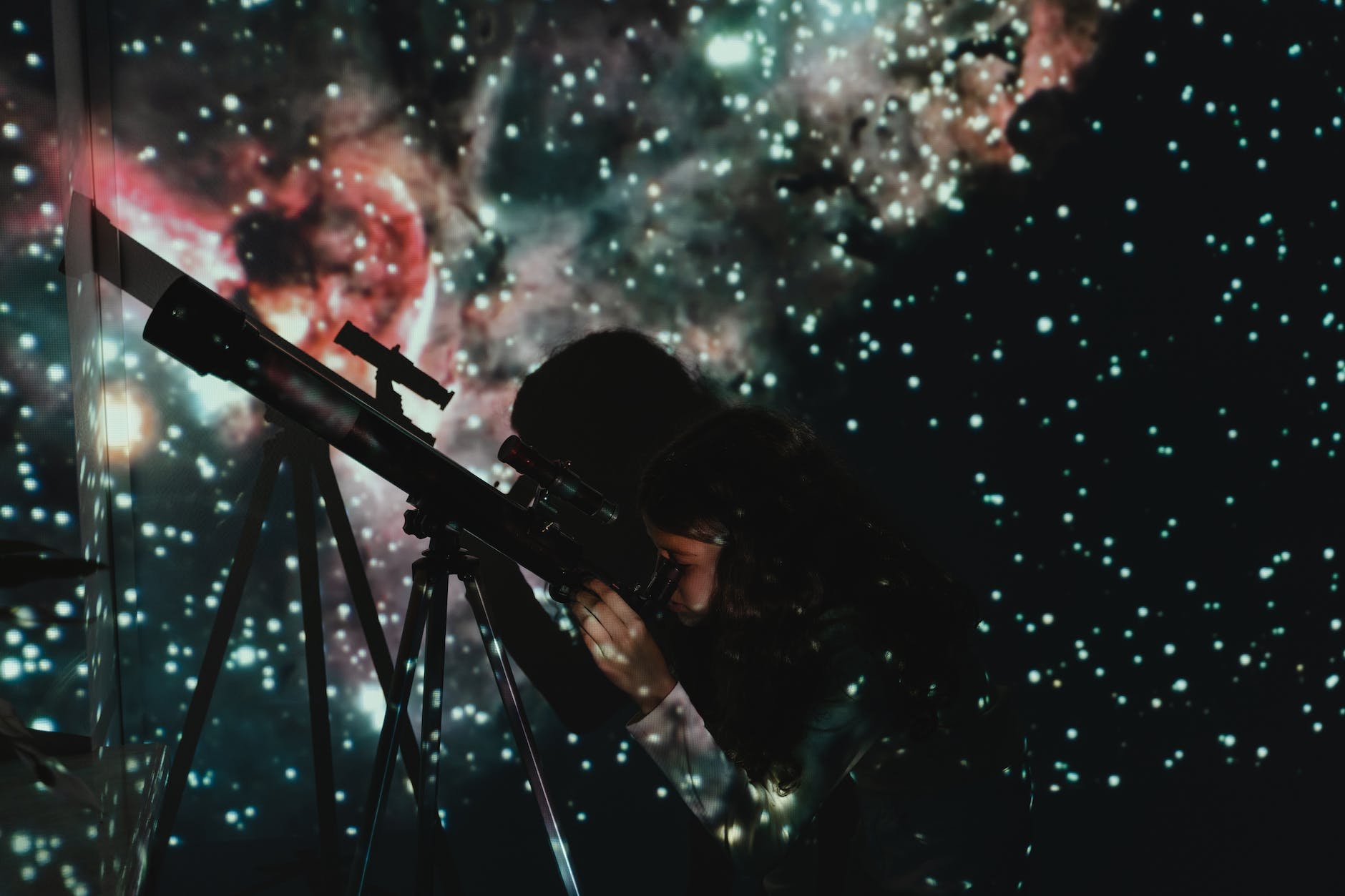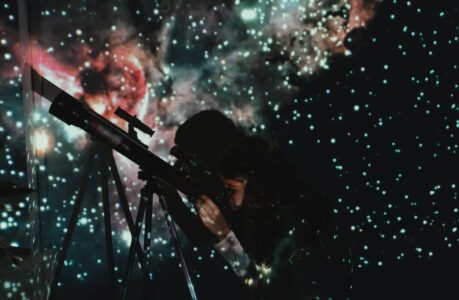Discover the must-have tools and equipment for aspiring astronomers to embark on a captivating journey through the cosmos.
Are you fascinated by the infinite expanse of the night sky, with its celestial wonders and enigmatic mysteries? As a beginner astronomer, diving into the world of stargazing can be both exciting and overwhelming. The universe offers an awe-inspiring canvas of stars, planets, and galaxies just waiting to be explored. To embark on this captivating journey, you need the right tools and equipment to enhance your celestial observations. In this article, we will explore the seven essential kit items that will kickstart your astronomical adventure and allow you to unlock the wonders of the night sky.
1. Telescope: Your Gateway to the Universe
No beginner astronomer’s toolkit is complete without a telescope. A high-quality telescope serves as your portal to the cosmos, bringing distant celestial objects closer and revealing intricate details you would never perceive with the naked eye. When choosing a telescope, consider factors such as aperture, focal length, and optical quality.
Aperture, often denoted by the diameter of the telescope’s primary mirror or lens, determines the amount of light-gathering power. A larger aperture allows for clearer and brighter views, enabling you to observe faint objects in the sky. Focal length influences the magnification and field of view, so consider your specific interests when selecting a telescope with an appropriate focal length. Lastly, ensure the telescope’s optics provide crisp and sharp images, as this significantly impacts your viewing experience.
2. Binoculars: A Versatile Alternative
While a telescope is a fantastic investment, binoculars can be an excellent starting point for beginner astronomers on a budget or those who desire a more portable option. Binoculars provide a wide field of view, allowing you to take in expansive celestial vistas. They are versatile tools that can enhance your stargazing experience by revealing intricate details of the moon’s surface, stunning clusters of stars, and even the moons of Jupiter.
When choosing binoculars for astronomy, opt for models with a larger objective lens diameter, such as 50mm or higher, as this ensures better light gathering and improved low-light performance. Additionally, consider binoculars with a sturdy tripod adapter to stabilize the view for extended observations. Binoculars offer a convenient and portable way to explore the night sky while still providing remarkable celestial views.
3. Star Chart or Mobile Apps: Navigating the Celestial Sphere
As a beginner astronomer, navigating the vast expanse of the night sky may seem like a daunting task. However, with the aid of star charts or mobile apps, you can easily identify constellations, stars, and planets. Star charts are printed maps of the night sky that assist in locating specific celestial objects. They provide a visual reference and help you develop a deeper understanding of the cosmos.
Alternatively, mobile apps have become increasingly popular among stargazers. With a simple tap on your smartphone, these apps can reveal a wealth of information about the celestial bodies above you. Many apps include augmented reality features, allowing you to point your device at the sky and see an overlay of constellations and their names. Some even provide real-time tracking of satellites and the International Space Station. Whether you opt for a star chart or a mobile app, these tools will guide you through the celestial sphere and enrich your stargazing experience.
4. Red LED Flashlight: Preserving Night Vision
Astronomy is a nocturnal activity, and preserving your night vision is crucial for observing celestial objects effectively. The human eye takes time to adjust to darkness, and exposure to bright white light can disrupt this adaptation. A red LED flashlight is
the ideal solution for illuminating your observing area without compromising your night vision. Unlike white light, which contains a broad spectrum of colors, red light has the least impact on your eyes’ sensitivity to low-light conditions.
A red LED flashlight emits a dim and narrow band of red light, allowing you to read star charts, adjust your equipment, and navigate your observing site while maintaining your night vision. It’s important to note that using your smartphone or a regular flashlight with a red filter may not be as effective, as they can still emit some white light. Investing in a dedicated red LED flashlight will significantly enhance your astronomical observations.
5. Observing Chair: Comfort for Extended Sessions
Stargazing can be a captivating and immersive experience that often leads to extended observing sessions. During these long nights of exploration, comfort is paramount. An observing chair is an essential piece of equipment that provides ergonomic support, allowing you to maintain a relaxed and comfortable posture while observing the night sky.
Observing chairs are designed with adjustable height and angle features, enabling you to find the optimal position for observing objects at different altitudes. They also offer stability, which is especially beneficial when using high-powered telescopes. By minimizing strain on your neck and back, an observing chair ensures that you can fully enjoy your astronomical journey without discomfort.
6. Astronomy Guidebooks: Knowledge at Your Fingertips
As you delve deeper into the realm of astronomy, having a comprehensive reference guide at your fingertips can greatly enhance your understanding and appreciation of the celestial wonders. Astronomy guidebooks provide valuable insights into the science, history, and mythology behind the stars, planets, and galaxies. They offer practical tips, star charts, and detailed information on celestial objects, making them indispensable resources for beginner astronomers.
When selecting astronomy guidebooks, consider those tailored to beginners, as they provide a solid foundation for your astronomical pursuits. Look for books that cover a wide range of topics, from basic stargazing techniques to more advanced astrophysics concepts. Additionally, choose guidebooks with clear illustrations and easy-to-understand language to facilitate your learning journey.
7. Warm Clothing and Thermos: Conquering the Elements
Engaging in astronomy often involves spending hours outdoors, and depending on your location, the night air can get quite chilly. To ensure your comfort and focus during your stargazing sessions, it’s essential to dress appropriately and prepare for changing weather conditions.
Layering your clothing is key to regulating body temperature. Start with a moisture-wicking base layer to keep you dry, add insulating layers for warmth, and top it off with a windproof and waterproof outer layer. Don’t forget to wear a warm hat, gloves, and comfortable footwear to keep extremities warm.
In addition to warm clothing, a thermos filled with a hot beverage of your choice can be a delightful companion during your observing sessions. Sipping a warm drink not only provides comfort but also keeps you hydrated and alert throughout the night.
Embark on Your Celestial Journey
With these seven essential kit items in hand, you’re ready to embark on a captivating journey through the cosmos. Whether you choose to explore the universe with a telescope or binoculars, armed with star charts or mobile apps, and equipped with an observing chair and red LED flashlight, you have the tools necessary to unlock the wonders of the night sky.
Remember to dress comfortably, bring your astronomy guidebooks, and embrace the awe-inspiring beauty of the celestial sphere. As you delve into the depths of the universe, let your curiosity guide you, and enjoy the mesmerizing wonders that await you in the vastness of space. Happy stargazing!

